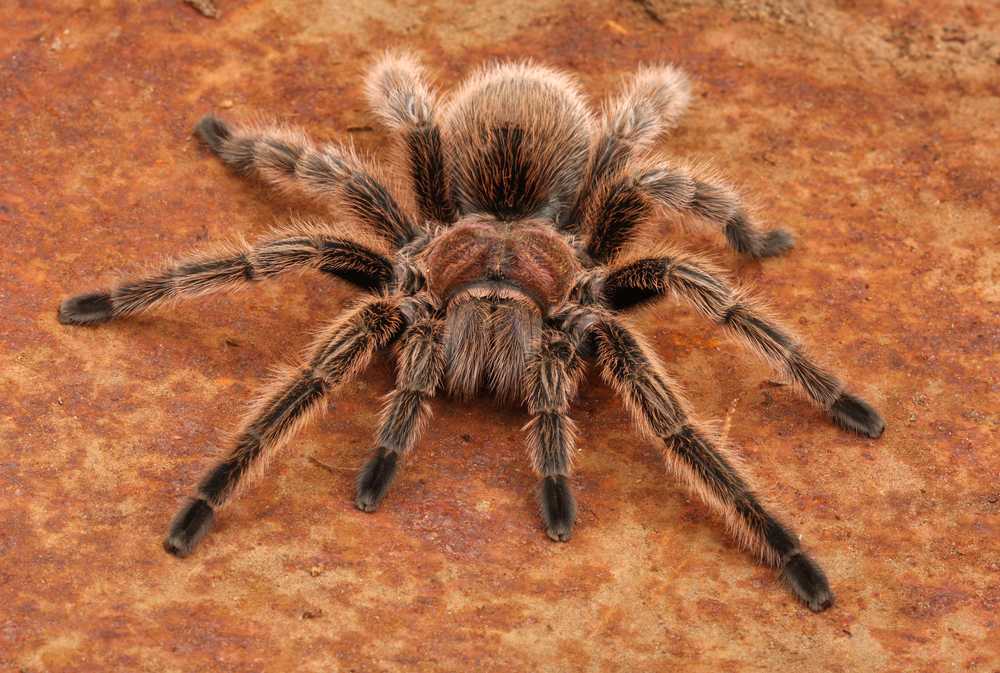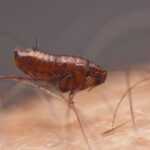Understanding and Managing the Chilean Recluse Spider
The Chilean recluse spider (Loxosceles laeta), a member of the sicariid spiders family, is a venomous spider known for its dangerous bite. Recognizing this spider is essential due to its medical and biological research significance. This article covers its identification, natural habitat, venom effects, bite symptoms, treatments, prevention, and control.
- The Chilean recluse spider is identifiable by its dark brown, reddish-brown cephalothorax, grayish-brown abdomen with fine hairs, and unique six eyes arranged in pairs, along with a distinctive violin-shaped marking, earning it the nickname “violin spider,” “fiddleback spider,” or “corner spider.”
- Its venom contains sphingomyelinase D, a toxin also found in a few pathogenic bacteria, which can cause serious systemic reactions such as cutaneous loxoscelism and systemic illness called loxoscelism, making prompt medical intervention crucial after a bite.
- Preventive measures, including maintaining a clean environment and employing professional pest control services, are essential for managing Chilean recluse spider populations and reducing encounters with this deadly spider.
Identifying the Chilean Recluse Spider
Proper identification of the Chilean recluse spider and other South American recluse spiders is critical for effective management. This spider is one of the largest Loxosceles species, measuring roughly 5/8 inch in body length. It features a reddish-brown cephalothorax and a grayish-brown abdomen covered with fine hairs. The most distinctive characteristic is the violin pattern on the cephalothorax, with the widest part at the front where the legs attach.
Unlike most spiders, which have eight eyes, the Chilean recluse has six eyes arranged in three pairs (dyads) in a wide arc. This eye arrangement is a key diagnostic feature that distinguishes it from harmless spiders and non-recluse spiders. Their legs are long and relatively hairless, and when fully extended, they can span about two inches in diameter.
These unique features help differentiate the Chilean recluse from other recluse spiders, including the Mediterranean recluse and brown recluse spider, which share some similarities but differ in geographic distribution and venom potency.
Natural Habitat of the Chilean Recluse
Native to South America, particularly Chile, Peru, Argentina, Uruguay, and parts of Brazil, the Chilean recluse spider thrives in warm climates and is frequently found in human dwellings. It builds irregular webs and shelters in dark, undisturbed places such as woodpiles, sheds, closets, and garages.
Although primarily native to South America, this spider has been introduced to various regions worldwide, including parts of the United States (notably Los Angeles, California), Australia, and Finland. In Finland, it was likely introduced through fruit shipments and has been found in the Natural History Museum Bern and the Natural History Museum of Helsinki.
The Chilean recluse’s ability to survive long periods without food or water and its preference for dry, secluded habitats contribute to its successful spread beyond its natural range. Its presence in urban environments makes it a significant concern for homeowners and pest control professionals.
Venom and Medical Significance
The venom of the Chilean recluse spider contains sphingomyelinase D, an enzyme also found in a few pathogenic bacteria, which is responsible for its dermonecrotic effects. This toxin disrupts cell membranes by altering lipid rafts, leading to oxidative stress and activation of metalloproteinases such as ADAM-10 and ADAM-17. These processes contribute to tissue damage and serious systemic reactions.
Bites can cause cutaneous loxoscelism, characterized by necrotizing skin ulcers that may take months to heal and leave deep scars. Cutaneous loxoscelism occurred in about 50% of cases with severe skin necrosis. The most severe form, viscerocutaneous loxoscelism, occurs in 10-15% of cases and involves systemic illness affecting inner organs, potentially leading to acute tubular necrosis, which can cause kidney failure.
The Chilean recluse is considered one of the most dangerous recluse spiders due to the potency of its venom, which is higher than that of other sicariid spiders like the brown recluse spider and the six-eyed sand spider. Prompt medical attention is essential to manage symptoms and prevent more serious systemic effects.
Symptoms of a Chilean Recluse Bite
Symptoms typically develop within hours after a bite. Initial pain may be mild skin irritation but usually intensifies within the first eight hours. The bite area often exhibits a pale center surrounded by a red ring, creating a target-like appearance. Over time, the center may darken to blue or purple and develop into an ulcer with surrounding soft tissue necrosis.
Systemic symptoms can include fever, chills, body aches, hemolysis, and in severe cases, viscerocutaneous loxoscelism manifests with skin blanching, scarlatiniform rash, and involvement of inner organs. More serious systemic effects can occur up to seven hours after the bite.
The severity of symptoms varies depending on individual sensitivity, bite severity, and timely medical intervention.
Treatment Options for Bites
Immediate first aid involves RICE therapy (rest, ice, compression, elevation) and applying a cool compress to reduce pain and swelling. Applying aloe vera may soothe the skin. Over-the-counter pain relievers and antihistamines may help manage discomfort and itching.
Medical treatment may include systemic corticosteroids to reduce inflammation. In South America, dapsone has been used in some clinical and epidemiological studies to treat cutaneous loxoscelism, though controlled clinical trials remain limited. No specific antivenom is widely available, and treatment focuses on symptom management and preventing secondary infections.
Prompt medical evaluation is critical, especially for bites showing signs of necrosis or systemic involvement.
Preventing Encounters with Chilean Recluse Spiders
Prevention focuses on habitat modification and reducing spider harborage. Keeping outdoor areas free of debris, removing woodpiles away from homes, and sealing cracks and openings in buildings can limit spider access.
Indoors, regular vacuuming, dusting, and decluttering reduce hiding spots. Storing clothes and shoes in sealed containers and wearing gloves when handling stored items helps prevent bites.
Using tight-fitting screens on windows and doors further reduces the chance of entry. Awareness of the spider’s preferred habitats, such as dark, undisturbed areas, is essential for effective prevention.
Controlling Chilean Recluse Populations
Professional pest control services are often necessary to manage infestations. Companies provide thorough inspections, customized treatment plans, and follow-up services to control Chilean recluse populations effectively.
Chemical treatments combined with environmental management, such as decluttering and habitat modification, yield the best results. Since the Chilean recluse does not typically thrive outside its native range, ongoing monitoring and control can prevent establishment.
Understanding the Chilean recluse spider involves recognizing its distinctive features, habitat preferences, venom effects, and bite symptoms. This spider’s venom can cause serious health issues, including cutaneous and viscerocutaneous loxoscelism, making early identification and prompt treatment vital.
Preventive measures, habitat management, and professional pest control services are key to minimizing encounters and managing populations. With informed actions and expert assistance, homeowners can protect themselves from the risks posed by this deadly spider.
Frequently Asked Questions
What should I do if I suspect a Chilean recluse spider bite?
Apply RICE therapy immediately and seek prompt medical attention for proper diagnosis and treatment to prevent serious complications.
How can I prevent Chilean recluse spiders from entering my home?
Maintain a clean outdoor environment, seal cracks and openings, use tight-fitting window and door screens, and regularly clean indoor spaces to reduce spider harborage.
What are the distinctive features of the Chilean recluse spider?
It has a dark brown, reddish-brown cephalothorax with a violin-shaped marking, six eyes arranged in three pairs, and long, relatively hairless legs.
Why is professional pest control important for managing recluse spider populations?
Experts utilize specialized techniques and customized treatment plans to effectively eliminate infestations and ensure safer living environments.
What services does Gopher Patrol offer for spider control?
Gopher Patrol provides inspections, tailored treatment plans, follow-up services, and eco-friendly pest management solutions to control recluse spider populations effectively.





